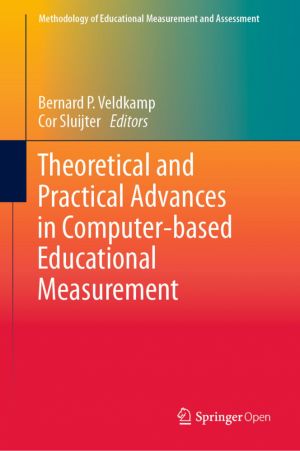Learning, Marginalization, and Improving the Quality of Education in Low-income Countries
by Daniel Wagner, Nathan Castillo, Suzanne Grant Lewis
DescriptionTable of ContentsDetailsHashtagsReport an issue
This volume brings together academic research experts, government officials and field-based practitioners. National and global experts present multiple broad thematic papers - ranging from the effects of migration and improving teaching to the potential of educational technologies, and better metrics for understanding and financing education. In addition, local experts, practitioners and policymakers describe their own work on LBOP issues being undertaken in Kenya, India, Mexico and Ivory Coast. The contributors argue persuasively that learning equity is a moral imperative, but also one that will have educational, economic and social impacts. They further outline how achieving SDG4 will take renewed and persistent effort by stakeholders to use better measurement tools to promote learning achievement among poor and marginalized children.
This volume builds on the second international conference on Learning at the Bottom of the Pyramid (LBOP2). It will be an indispensable resource for policymakers, researchers and government thinktanks, and local experts, as well as any readers interested in the implementation of learning equity across the globe. 






Book Description
Improving learning evidence and outcomes for those most in need in developing countries is at the heart of the United Nations' Sustainable Development Goal on Education (SDG4). This timely volume brings together contributions on current empirical research and analysis of emerging trends that focus on improving the quality of education through better policy and practice, particularly for those who need improved 'learning at the bottom of the pyramid' (LBOP).This volume brings together academic research experts, government officials and field-based practitioners. National and global experts present multiple broad thematic papers - ranging from the effects of migration and improving teaching to the potential of educational technologies, and better metrics for understanding and financing education. In addition, local experts, practitioners and policymakers describe their own work on LBOP issues being undertaken in Kenya, India, Mexico and Ivory Coast. The contributors argue persuasively that learning equity is a moral imperative, but also one that will have educational, economic and social impacts. They further outline how achieving SDG4 will take renewed and persistent effort by stakeholders to use better measurement tools to promote learning achievement among poor and marginalized children.
This volume builds on the second international conference on Learning at the Bottom of the Pyramid (LBOP2). It will be an indispensable resource for policymakers, researchers and government thinktanks, and local experts, as well as any readers interested in the implementation of learning equity across the globe.
This open book is licensed under a Creative Commons License (CC BY-NC). You can download Learning, Marginalization, and Improving the Quality of Education in Low-income Countries ebook for free in PDF format (48.1 MB).
Table of Contents
Chapter 1
Diversity and Equity in Education: Policy, Practice, and Options for Reaching Children at the Bottom of the Pyramid
Chapter 2
Education on the Move: How Migration Affects Learning Outcomes
Chapter 3
Teaching at the Bottom of the Pyramid: Teacher Education in Poor and Marginalized Communities
Chapter 4
Improving the Impact of Educational Technologies on Learning Within Low-Income Contexts
Chapter 5
Reducing Inequality in Education Using "Smaller, Quicker, Cheaper" Assessments
Chapter 6
Not All Pyramids Are the Same: Relative Learning Exclusion and Its Evolution Over Time
Chapter 7
Financing Education at the Bottom of the Pyramid
Chapter 8
Mexico: Education and Learning at the Bottom of the Pyramid
Chapter 9
India: Learning in the Margin: Reflections on Indian Policies and Programs for Education of the Disadvantaged
Chapter 10
India: Learning Challenges for the Marginalized
Chapter 11
India: The Role of Civil Society Organizations and Scalable Technology Solutions for Marginalized Communities
Chapter 12
Ivory Coast: Children at the Bottom of the Pyramid and Government Policies
Chapter 13
Ivory Coast: Promoting Learning Outcomes at the Bottom of the Pyramid
Chapter 14
Kenya: Education, Learning and Policy-Framing for Children at the Bottom of the Pyramid
Chapter 15
Kenya: Free Primary and Day Secondary Education Policies and Their Contributions to Learning at the Bottom of the Pyramid
Chapter 16
Kenya: Disability and Learning at the Bottom of the Pyramid
Chapter 17
Kenya: Education in Marginalized Communities
Book Details
Title
Learning, Marginalization, and Improving the Quality of Education in Low-income Countries
Subject
Business and Management
Publisher
Open Book Publishers
Published
2022
Pages
490
Edition
1
Language
English
ISBN13
9781800642003
ISBN10
1800642008
ISBN13 Digital
9781800642027
ISBN10 Digital
1800642024
PDF Size
48.1 MB
License

Related Books

This book written by international experts in the field of educational innovation is a guide for universities to become world-class universities. It contributes to the current international intellectual debate on the future of higher education. It also tells the story of King Abdulaziz University in Jeddah (Saudi Arabia) and its effort to become a ...

Fundamental rights for all people with disabilities, education and employment are key for the inclusion of people with autism. They play as facilitators for the social inclusion of persons with autism and as multipliers for their enjoyment of other fundamental rights. After outlining the international and European dimensions of the legal protection...

This open access book, inspired by the ICME 13 Thematic Afternoon on "European Didactic Traditions", consists of 17 chapters, in which educators from the Netherlands reflect on the teaching and learning of mathematics in their country and the role of the Dutch domain-specific instruction theory of Realistic Mathematics Education.Written b...

This book presents a multitude of different, yet related, innovations in educational measurement and provides insight in their practical possibilities.The book not only addresses several improvements in the quality of educational measurement and innovations in (inter)national large scale assessments, but also several advances in psychometrics and i...

This book presents an overview of the main research findings and case studies concerning education and skills for inclusive growth, green jobs and the greening of economies. Focusing on India, Indonesia, Sri Lanka and Viet Nam, it discusses government and business sector responses to these issues and how Technical and Vocational Education and Train...

This book offers a comparative study of eight ambitious national reforms that sought to create opportunities for students to gain the necessary breath of skills to thrive in a rapidly changing world. It examines how national governments transform education systems to provide students opportunities to develop such skills. It analyses comprehensive e...

